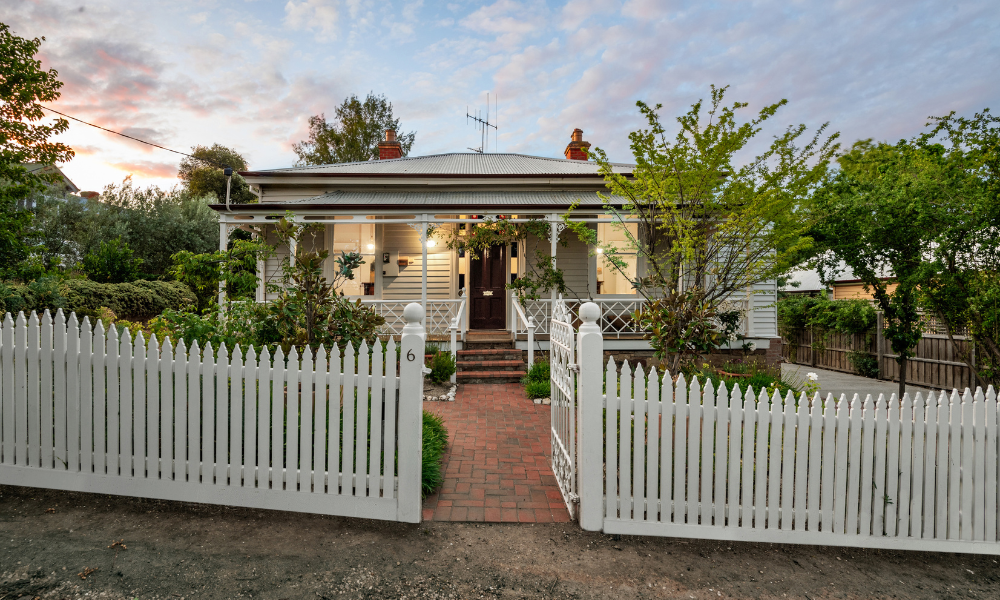
In a property market which has historically seen a stable trend of median value increases, the impact of the unprecedented pandemic years has been revealed throughout the Greater Bendigo region in 2023.
The fall-out in the construction sector off the back of government stimulus for new homes, a record-paced shift from historically low-interest rates, and a combination of factors in the residential property investment sector have presented a shift in the market dynamics. However, a very familiar and sustained theme in the fundamentals of our property market remains.
Robert Ketterer, one of the most respected voices in Bendigo real estate, shares his insights, views and predictions at the end of 2023.
Underpinning Established Home Values - the Bendigo Supply Factor
Historically in Bendigo, there has been an undersupply of housing stock which has traditionally shown an upward stable trend in median values for established home sales. During the pandemic we saw several factors drive values up at record levels, however nationally with economic uncertainty, there have been some markets retract in value, but this is not the case in Bendigo.
During 2023 as interest rates have been rising, some buyers have exited the market, and others have adjusted their thinking around the location, size and price point of the homes they are looking to purchase.
New house and land buyers have reverted to the established home market as it generally offers better value for money if you are prepared to compromise on some aspects of what you want in a home.
Homeowners thinking of selling are delaying their plans to sell. This continues to contribute to our historic low stock levels.
This outlook is set to continue as uncertainty around interest rates continues with most commentators suggesting any drop in rates is more likely to occur in the second half of 2024, with a further increase in early 2024 not off the agenda.
In addition, consistent media reports commenting on the perilously low state of housing supply nationally, record immigration levels and in particular Bendigo’s Population growth which is estimated to increase from a current population of 125,377 to 155,596 by 2036 (source COGB), and based on this growth and the average home in Bendigo being occupied by 2.4 people (source ABS), we will require 12,591 new homes over the next 22 years at an average rate of 572 new homes per year.
Evolving Economic Conditions
From historically low-interest rates to the sharpest increase in rates on record, the economic landscape has shifted significantly in the last year.
Rising interest rates and stagnant wage growth have affected the borrowing power of those in or those looking to enter the market.
Economic conditions tend to concern people and bring a more conservative approach to their property plans. Whilst people still desire to enter the market or upgrade their homes, these people are more likely to delay their decision to act.
People needing to purchase a home will spend a lot more time researching property values to ensure they are getting value for money
Land and Construction Challenges
Land supply for new homes is tightening as we start to feel the effects of the large number of pre-sales during the Covid period, driven by the attraction of record low-interest rates and major government incentives to build a new home.
Incentives were introduced to support the construction industry, which at the time were seen as saviours but many may view them in hindsight as a poison arrow.
This major influx of new buyers into the market put tremendous pressure on the supply of trades and materials that ultimately saw costs increase substantially and construction time frames blow out, generally measured in months but in some instances greater than 12 months.
Builders with fixed-price contracts found themselves in a situation where they were unable to deliver on contracts, forcing them into administration and more often liquidation.
The construction cost is still being felt, with building companies being more reluctant to lock in fixed-price contracts unless the land is titled and home builders concerned that building companies will not be able to deliver on their contracts.
These concerns coupled with Interest rate rises have dramatically slowed land sales, this affects developer's ability to continue to supply new land offerings due to restrictive lending covenants placed on them by lenders.
Ultimately this will see choice dwindle as developers look to sell down existing stock before committing to any new offerings whilst conscious of the lag time it is likely to take to resupply the market once affordability and confidence start to return.
In the interim land developers are reducing land sizes which effectively increases their yield of lots developed but allows them to offer land at a lower price point, for example, two 600m2 blocks are changed to three 400m2 blocks.
Short-term Investor Challenges and the Impact on Rental Affordability
Record low vacancy rates, government interventions and a slowing pipeline of investors in the market have resulted in what has been dubbed a property crisis.
Whilst rent continues to increase and vacancies are practically non-existent, many rental providers are becoming frustrated with the added government regulations and associated costs reducing returns even though record rents are being achieved.
Another factor is that many older properties need funds spent to comply with the Minimum Standards requirements for rental properties. Owners are opting to sell rather than invest in these works.
Many mature investors are starting to cash in property and convert funds to a more passive investment model, being well aware that they are benefitting from many years of continuous capital growth, particularly off the back of record increases in values during the Covid period
Rising interest rates and tighter borrowing requirements by banks have added to the reduced number of rental providers entering the market.
Opportunities do exist for people to invest in property and benefit long term. Whilst interest rates are higher in 2024, rates are predicted to reduce in the mid-term.
Buying property and holding it long-term has historically built wealth for property investors and provided the opportunity to use equity in property to build on a property portfolio.
The Australian Government continues to support investment via negative gearing and attractive depreciation allowances which are unlikely to change in the current housing climate we are experiencing.
Looking Forward
Real Estate can appear to be a very daunting industry to understand.
In what has been an interesting ride over the last 3-4 years, 2023 saw property market dynamics shift alongside an economy resetting. Interest rates have been a key driver of confidence in the market, which understandably has shifted buyer sentiment and created a more cautious approach.
As we look to 2024 I see the construction industry re-setting and ‘new-normal’ markets returning, with trade availability and material costs stabilising. This combined with the use of building incentives, I believe we will see the volume of new homes closer to the level needed to sustain expected population increases in our region.
My advice is to enter the market in some form as soon as you are comfortable and able to do so from a financial and job security aspect. Whether it's your first purchase or an addition to your portfolio, ensure your expectations are matched with your capacity and level of comfort. A well-researched decision to enter the market, with the support of a Real Estate professional will be very rewarding.
An old saying is "Real Estate feels like it is very expensive when you buy it" but history has proven it to be a very safe and rewarding investment, particularly in Bendigo, providing long term financial security but equally and more importantly a safe and secure home for you and your family to reside in.

